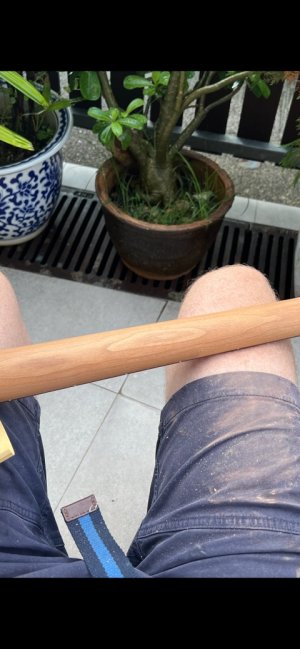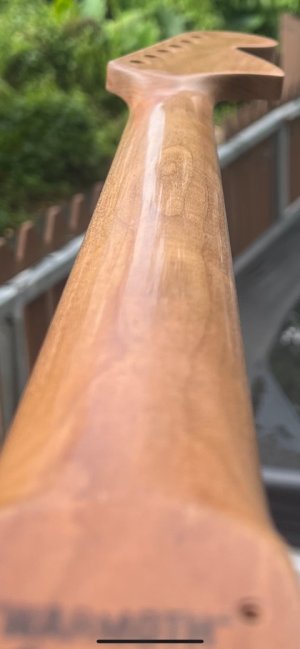stratamania
Mythical Status
- Messages
- 12,276
Indeed finishing needs something to adhere to. If the surface is too smooth the shellac might wipe on and off without doing very much.
Per the sealer this is what it is and where to find it.
Per the sealer this is what it is and where to find it.
All our necks are dipped in an oil based penetrating sealer which is compatible with virtually all secondary finishes. This provides enhanced stability; however, it is not adequate protection for playing. We strongly recommend you apply a hard finish to all Maple, Mahogany, Walnut, Korina, and Koa necks.
Reference https://warmoth.com/guitar-neck-finishes




